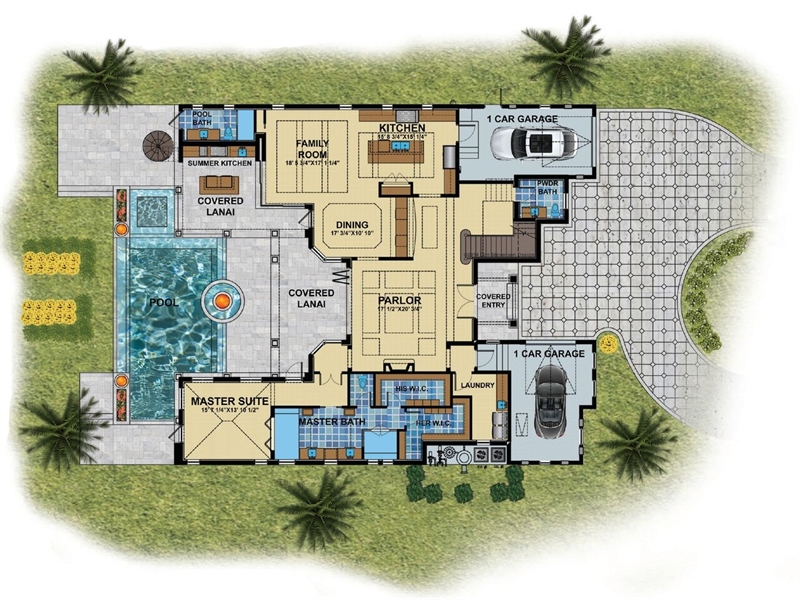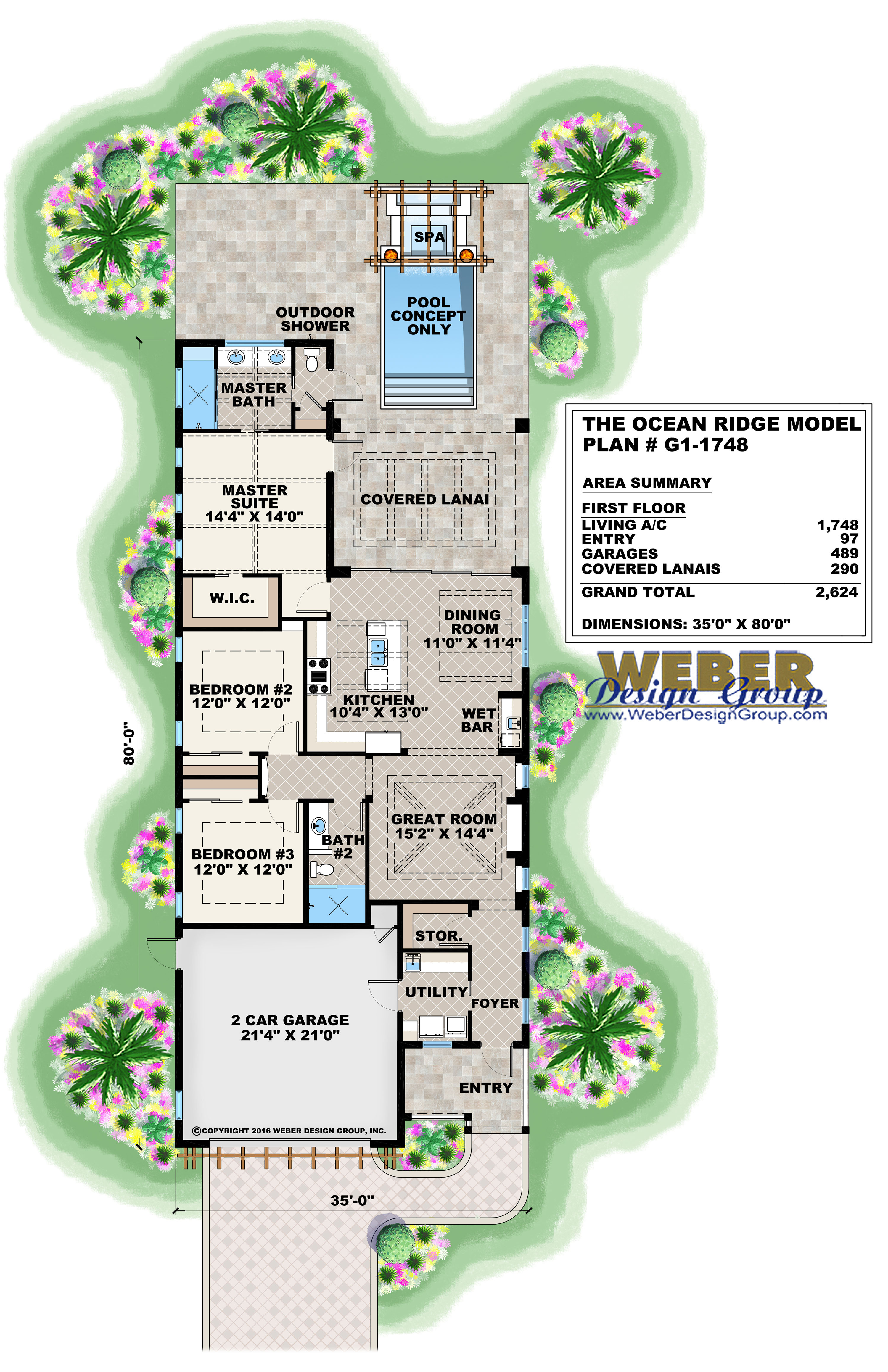As the allure of coastal living continues to captivate many, open concept beach house floor plans have emerged as a popular choice for homeowners seeking both style and functionality. With their airy designs and seamless flow between indoor and outdoor spaces, these homes reflect the relaxed vibe of beach life. In this comprehensive guide, we’ll delve into the various aspects of open concept beach house floor plans, including design elements, benefits, cultural influences, and tips for creating your dream space.
What is an Open Concept Beach House Floor Plan?
An open concept floor plan is characterized by large, unobstructed spaces that blend together, often combining the kitchen, living room, and dining area into a single area. This design fosters a sense of community and enhances views, making it ideal for beach houses where natural light and scenery are prime attractions.
History and Evolution of Open Concept Designs
Historically, residential layouts featured separate rooms designated for specific activities. However, in the late 20th century, particularly in the USA, architects began to embrace open concept designs. The shift was influenced by lifestyle changes, with many families seeking more interaction and togetherness.
Benefits of Open Concept Beach House Floor Plans
1. Enhanced Natural Light
Open layouts maximize natural light by eliminating barriers between rooms. Large windows and sliding doors often complement the open concept, allowing sunlight to flood the space and offering stunning views of the beach.
2. Ideal for Entertaining
Open concept designs create a welcoming atmosphere that is perfect for social gatherings. Whether hosting family dinners or beach parties, the seamless flow from the kitchen to the living area promotes interactions.

3. Flexibility in Space Usage
These floor plans allow homeowners to customize their space easily. Furniture arrangement can vary based on activities, and the vastness can accommodate diverse functions without feeling cramped.
4. Maximizing Views
Beach houses are often built to showcase picturesque surroundings. Open floor plans enable the design to take full advantage of panoramic vistas, creating a beautiful backdrop for everyday life.

5. Increased Resale Value
Homes with open concept layouts are often more appealing to potential buyers, as they reflect modern trends and lifestyles, potentially increasing the resale value of the property.
Popular Open Concept Beach House Floor Plans
1. Coastal Cottage Style
This style typically features a combination of wood and stone, with expansive decks and porches. The interior usually includes a large living area that opens into a kitchen with an island.

Layout example:
- Living Room: 20′ x 25′
- Kitchen: 15′ x 20′
- Dining Area: 12′ x 15′
2. Modern Beach House
Characterized by clean lines and minimalist design, modern beach houses emphasize functionality and simplicity. Large glass walls are common, merging the indoors with the outdoors.

Layout example:
- Living Room: 25′ x 30′
- Kitchen: 15′ x 25′
- Dining Area: 10′ x 15′
3. Rustic Retreat
Rustic beach houses utilize reclaimed wood, stone accents, and earthy tones, creating a cozy, inviting atmosphere. The open floor plan typically features a large fireplace as a focal point.

Layout example:
- Living Room: 20′ x 22′
- Kitchen: 14′ x 20′
- Dining Area: 12′ x 18′
How to Design Your Open Concept Beach House Floor Plan
1. Assessing Your Needs
Begin by identifying your lifestyle and how you plan to use the space. Consider family size, frequent guests, and your preferred activities while at the beach.

2. Choose the Right Layout
Some layouts may better suit your needs than others. Use the examples outlined above as a starting point for brainstorming your ideal space.
3. Focus on Flow and Functionality
Ensure that there is a natural flow between spaces. The kitchen should be accessible to the living and dining areas while facilitating easy movement.

4. Incorporate Outdoor Living Spaces
Extend your living area outdoors with patios, decks, and balconies. These spaces can serve as an additional dining or lounging area and allow you to enjoy the coastal breeze.
Design Tips:
- Use light colors to enhance openness.
- Integrate nature with large windows.
- Choose multi-functional furniture.
- Maintain a consistent style throughout.
Building Materials and Technologies for Open Concept Beach Houses
When building a beach house, it is essential to select materials that withstand coastal conditions. Here are some common materials and technologies:
1. Durable Roofing
Materials like metal or asphalt shingles are popular choices for beach houses due to their weather resistance.
2. Impact-Resistant Windows
Hurricane-rated windows protect against severe weather, ensuring safety while maintaining the design aesthetic.
3. Sustainable Materials
Consider using reclaimed wood or bamboo for flooring. These options are eco-friendly and add a natural touch to your home.
Pros and Cons of Open Concept Floor Plans
| Pros | Cons |
|---|---|
| 1. Enhanced social interaction | 1. Less privacy in the living areas |
| 2. Abundant natural light | 2. Potential for noise disturbance |
| 3. Flexible furniture arrangements | 3. Heating and cooling can be more challenging |
| 4. Improved aesthetics and flow | 4. May require more maintenance |
Cultural Influences on Beach House Design
Beach house designs often reflect the unique culture of their surroundings. For instance, in Hawaii, you’ll find open layouts with large lanais that blend indoor and outdoor living, while New England coastal homes may focus on nautical themes with shingle-based exteriors. Understanding local customs can inspire your beach house design choices.
Example: Florida Beach Houses
In Florida, open floor plans often feature tiled flooring, bright colors, and ample glass to provide an airy feel, capitalizing on the sunshine and warmth of the region.
Finding Inspiration for Your Beach House
As you consider your beach house design, seeking inspiration can be immensely helpful. Here are some resources:
- Online platforms like Pinterest and Houzz showcase various floor plans and design ideas.
- Local design shows and tours can offer hands-on experiences with open concept layouts.
- Architectural magazines often feature coastal living sections that highlight trends.
FAQs about Open Concept Beach House Floor Plans
1. What are the costs associated with building an open concept beach house?
The costs can vary significantly based on location, materials, and design complexity. On average, building a beach house can range from $200 to $400 per square foot.
2. How can I maintain privacy in an open concept layout?
Consider using strategic furniture placement, rugs, and plants to create designated zones within the open space while maintaining the overall openness.
3. Are open concept designs suitable for small beach houses?
Absolutely! Open concept designs can create the illusion of more space, making them a great option for smaller homes.
4. What are some common mistakes to avoid when designing an open concept beach house?
Some common mistakes include neglecting the placement of furniture, underestimating storage needs, and overlooking the importance of comfortable lighting.
Conclusion: Your Dream Beach House Awaits
Open concept beach house floor plans offer endless possibilities for creating a beautiful, functional, and welcoming home. Whether you’re looking for a cozy cottage or a modern retreat, understanding the benefits, design elements, and local influences can help you turn your dream into reality. Embrace the coastal lifestyle and design a space that reflects the serenity of beach living.
For further insights and detailed reports on open concept designs, consider exploring sources like the National Association of Home Builders and their State of the Nation’s Housing report.